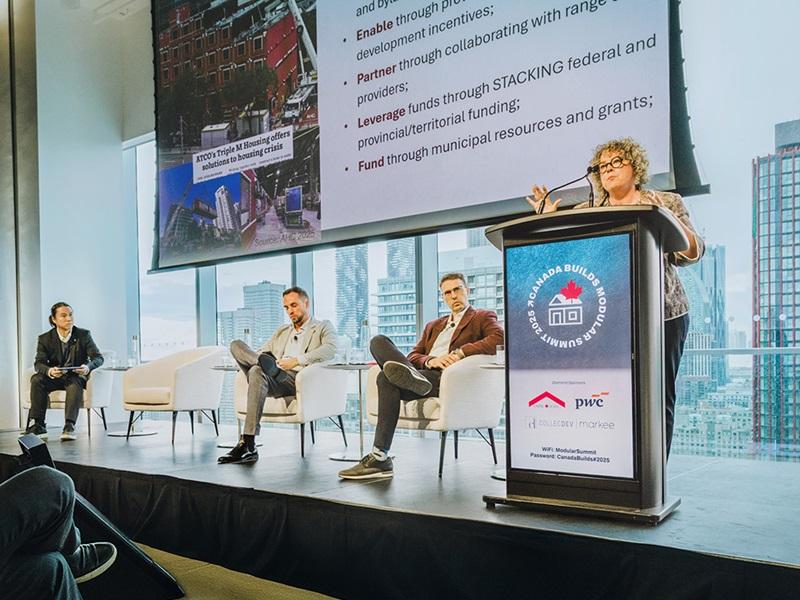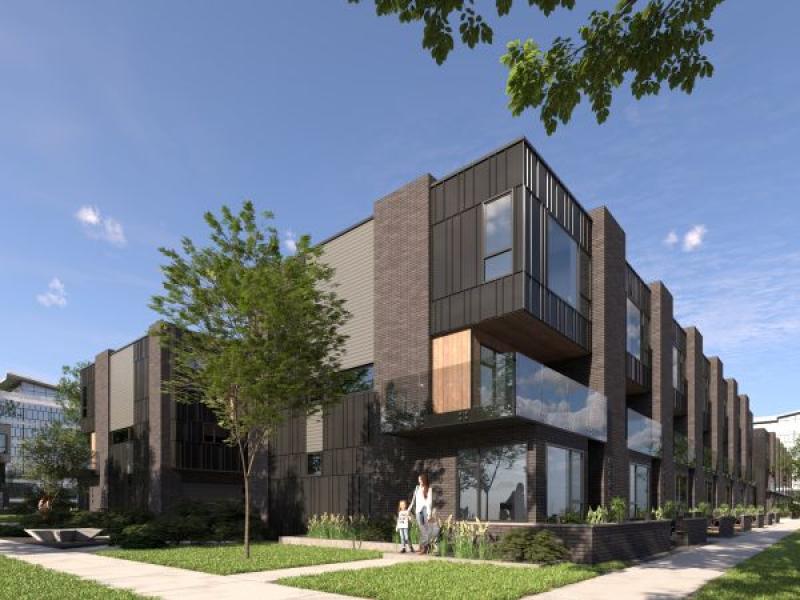 High housing costs across Ontario are stunting new construction and could lead to layoffs in trades already struggling to recruit new workers to accommodate a wave of coming retirements and an expected increase in demand, according to a new housing industry report.
High housing costs across Ontario are stunting new construction and could lead to layoffs in trades already struggling to recruit new workers to accommodate a wave of coming retirements and an expected increase in demand, according to a new housing industry report.
The report, Housing Market Outlooks in Ontario, was commissioned by the Residential Construction Council of Ontario (RESCON) and authored by Will Dunning Inc. It attributes inert market activity to excessive tax regimes and fees which have risen to wipe out any gains made in affordability from interest rates and economic uncertainty.
This is already impacting construction and employment in the sector. Although demand for housing is expected to continue to rise, the report notes "employment in new residential construction is currently at a peak level, and is very likely to fall (quite a lot) during the coming years."
“We’re not building the housing that needs to be built, which we can’t do principally because of the cost, and that’s why we’re worried we’re going to lose our crews,” Richard Lyall, RESCON’s president, told RENX Homes.
Lyall said the first step toward rectifying the double-pronged problem of chronic housing undersupply and trades shortages is a familiar refrain; cut red tape at the municipal level and expedite project approvals.
“Cut development charges — DCs are subject to sales taxes, so you’ve got taxes on taxes — and then cut the land transfer taxes and sales taxes,” Lyall told RENX Homes. “Municipalities in Ontario this year have continued to increase development charges when developers can’t afford to produce.”
Report considers two housing cost scenarios
The report, which notes housing starts have declined across Ontario due to higher interest rates and home prices, examined two scenarios:
- the first in which prices significantly decrease and affordability improves substantially; and
- the second wherein prices are somewhat lower and affordability slightly better.
In the first scenario, housing starts would continue dropping in 2025 to 50,238, then rebound slightly in 2026 to 53,533. In 2027 and 2028, starts would accelerate to 56,658 and 71,777, respectively. The “person years of construction employment” during the period would increase from 58,068 in 2025 to 71,531 in 2028.
But in the second scenario, housing starts would only increase from 49,694 in 2025 to 62,912 in 2028, when person-years-of-construction-employment would peak at 63,189.
However, there have been 73,950 housing starts in 2024, according to the report — higher than even the 2028 projection in the first scenario. Years of construction employment have dropped to 66,611 this year from 79,256 in 2023.
Housing starts peaked at just under 100,000 in 2021, and were above 96,000 in 2022.
The report noted the employment-to-population ratio (the number of adults who have jobs) peaked at 61.8 per cent in 2022 and 2023, and has fallen to 60.6 per cent this year. While the report projects only a nominal improvement in 2025, it is forecast to continue rising slightly between 2026 and 2028.
Out of nearly 40,000 housing starts in the GTA this year, more than 31,000 have been in the high-rise sector, where most new residential construction in the region occurs. But by 2025, the consequences of elevated interest rates and languid preconstruction sales would be reflected in apartment starts declining to 18,048. Moreover, the report anticipates they will only recover to 23,915 by 2028 when economic conditions will have improved — although that can be explained by the lag between sales and actual construction, the report added.
The report also said total housing starts in the GTA between 2025 and 2028 will have a job impact that’s 33 per cent below where it was in the 2010s, and 31 per cent below the 2020-2024 period. Job deceleration for construction workers will last until late 2027.
Interest rates drop, but taxes and fees increase
There’s no easy solution to increasing housing supply.
Although the Bank of Canada is aggressively cutting its policy rate, which lowers mortgage rates, inflation remains a problem for many consumers. Equifax reported that, consequently, consumer debt is up $2.5 trillion because Canadians are struggling to service non-discretionary expenses.
Moreover, while the larger issue is housing affordability, governments continue proving an outsized hurdle.
The average cost of government taxes and fees on a new home in the GTA is $164,920, roughly $42,000 more than in 2022. In the apartment sector, government-imposed costs total $122,387, up about $32,000 since 2022.
The report also revealed that, per unit, the cost of delays in approval times ranges from $2,672 to $5,576 a month in the GTA and can add $43,000 to $90,000 to the final sticker price.
Cost of housing causing exodus of young adults
Paul Smetanin, president of the Canadian Centre for Economic Analysis, said taxes comprise more than a third of a new home’s price.
“Government taxes, charges and fees now make up 36 per cent of a new home’s average purchase price in Ontario, up from 31 per cent in 2021,” he said. “This significant increase, driven by rising development charges, is putting additional strain on housing affordability and is expected to have dire unintended consequences for the future ability of residential developers to build.”
Lyall agrees, adding that rampant housing affordability woes will indeed have ramifications for Ontario in particular. He said the high cost of housing is likely to repel the province’s best and brightest young minds, who won’t think twice about leaving.
“If our STEM stars are graduating from university and getting offered jobs at $110,000 to $220,000 a year, of the ones who don’t have parental support — which is 70 per cent of them — a lot are leaving,” Lyall said. “They’re leaving because ‘I can’t afford to live here. I can’t save anything.’
“Forget about starting a business or saving up for anything. You can go to Texas, pay half the income tax, get paid in U.S. dollars at the same amount and get three times the house for the money.”










